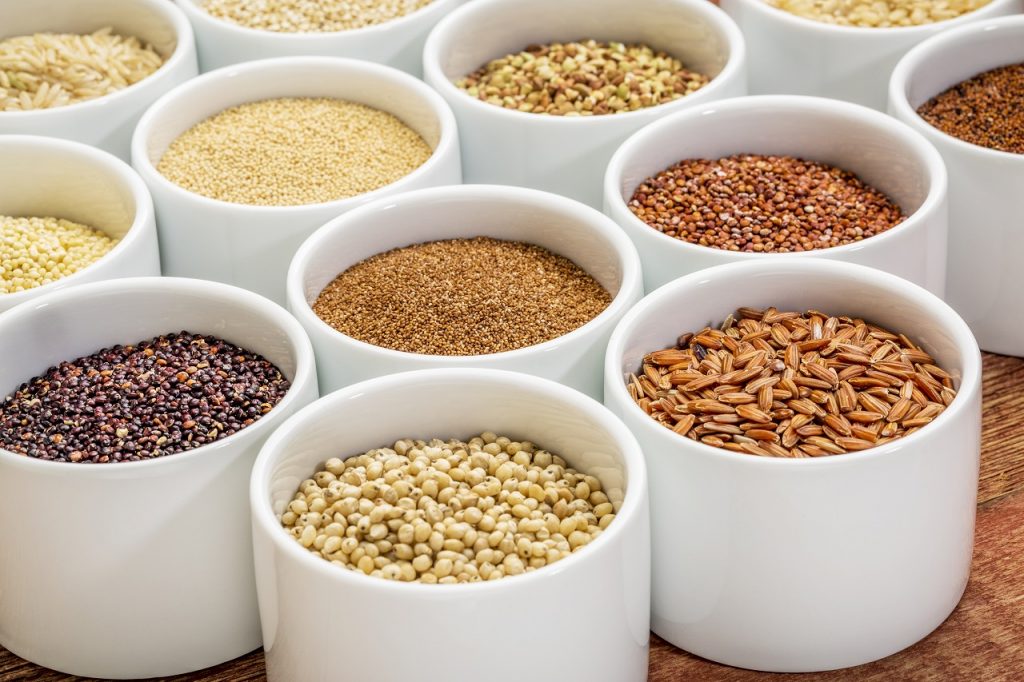 Diabetes is one of the most prevalent conditions throughout the world. Be it Type 1, Type 2 or Gestational. As soon as we realize that we have Diabetes, we immediately start controlling our sweet tooth in order to keep our sugar consumption under control. But apart from cutting down on sweets and adding less sugar to your tea/coffee, it is also extremely important to understand that we have to limit our calorie intake and add foods which have a low glycemic index to our diet.
Diabetes is one of the most prevalent conditions throughout the world. Be it Type 1, Type 2 or Gestational. As soon as we realize that we have Diabetes, we immediately start controlling our sweet tooth in order to keep our sugar consumption under control. But apart from cutting down on sweets and adding less sugar to your tea/coffee, it is also extremely important to understand that we have to limit our calorie intake and add foods which have a low glycemic index to our diet.
Low Glycemic Index foods are those which take a longer time to get digested and therefore, release the sugars in our blood at a slow pace. This, in turn, prevents sudden spikes in blood sugar levels. So if you’ve been replacing your white rice, which has a high glycemic index, with brown rice, there are some other diabetes friendly grains you can explore.
9 Diabetes Friendly Grains You Can Consume
- Amarnath: Gluten free, high protein (15-18%), a great source of calcium, fiber, iron, potassium, and many other vitamins and minerals.
How to cook: Add 2 cups water to 1 cup amaranth grain, bring to a boil, and then simmer for 15-20 minutes. - Foxtail millet: Gluten-free, high in dietary fiber, Low Glycemic index, reduces the levels of triglycerides, LDL and VLDL, magnesium present in millets is a co-factor in various enzymes involved in the secretion of insulin and metabolism of glucose in the body
How to cook: Pressure cook 1 cup of foxtail millet with 2.5 cups water and 1/2 tsp salt for three whistles. Turn off the flame. - Quinoa: Highest protein content, gluten-free, rich in fiber, iron, and magnesium. It is easy to cook as well.
How to cook: Pressure cook 1 cup of quinoa with 2.5 cups water for three whistles. Simmer for 5 minutes and turn off the flame. - Kodo Millet: High fiber and energy content and tastes like rice. Kodo Millet contains Copper, deficiency of which impairs sugar tolerance. Research has identified anti-diabetic compounds i.e. Quercetin and Phenolic acids which are present in Kodo Millet.
How to cook: Pressure cook 1 cup of Kodo Millet with 2.5 cups water and 1/2 tsp salt for two whistles. Turn off the flame. - Buckwheat: High in magnesium, phytonutrients, and dietary fiber and is gluten-free as well.
How to cook: Add 2 cups water to 1 cup buckwheat grain, bring to a boil, then simmer for 20 minutes. - Little Millet: Low cholesterol, gluten-free, high in protein and dietary fiber.
How to cook: Pressure cook 1 cup of little millet with 2.5 cups water and 1/2 tsp salt for two whistles. Turn off the flame. - Barnyard Millet: Gluten-free, has the highest fiber and iron content of all the millets.
How to cook: Pressure cook 1 cup of Barnyard Millet with 2.5 cups water and 1/2 tsp salt for two whistles. Turn off the flame. - Barley: High in soluble fiber which prevents the carbohydrates from getting absorbed too quickly and raising blood sugar levels. Low glycemic index and high in magnesium as well.
How to cook: Pressure cook 1 cup of Barley with 3 cups water for about 25 minutes after the first whistle. - Rye: A very good source of dietary fiber, phosphorus, magnesium, and vitamin B1. It’s a rich source of magnesium too.
How to cook: Soak 1 cup of rye grain for about 2 hours. Combine the grains with 4 cups of water in a pan, bring to a boil, simmer, close with a lid and cook for about 45 minutes.
There you have it! 9 diabetes friendly grains that are great alternatives to white rice or in case you want to switch from brown rice. Before making any dietary changes, consult a doctor or your nutritionist for further guidance and in case you have any allergies.
We hope this article helps you! Do leave your thoughts in the comments below. For more on managing diabetes, check out Healthy Reads.
For further guidance and motivation by certified experts, join the GOQii Diabetes Care program. It’s India’s only diabetes program that is driven by Smart Science and Personal Coaching to improve Fasting Blood Sugar (FBS), Postprandial Blood Sugar (PP), reduce HbA1c levels and let you win gold! You can subscribe here: https://store.goqii.com/diabetescare.
Let’s #DefeatDiabetes and #BeTheForce




I was diabetic for 13 years and was taking metformin 1000 mg twice daily. Last A1C was 15. My symptoms have always been stomach and bowels. I am a 54 year old male. the metformin wasn’t really working so this year, our family doctor started me on Natural Herbal Gardens Diabetes Disease Herbal mixture, With the help of Natural Herbal Garden natural herbs I have been able to reverse my symptoms using herbs, my symptoms totally declined over a 7 weeks use of the Natural Herbal Gardens Diabetes disease natural herbal formula. My diabetes is totally reversed! Visit their website www . naturalherbalgardens . com I am thankful to nature
Quinoa and buckwheat are not grains they are seeds and should be sprouted before they are consumed.
Very informative especially method of cooking. Thank you.
Good Information provides ,
Thanx for sharing such a amazing content ,
Keep it up, All the best